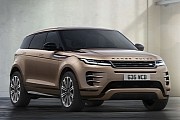history
Finding yourself stranded in the middle of nowhere because you thought you knew were you were going is bad but it's even worse when the cause of your distress is the very car you drive. Engine or suspension failure are not an option when going off-roading and Land Rover builders are well aware of this.
That's why when the vehicle's creators, the Wilks brothers, designed the first Land Rover in 1948, they made it stout like an ox. The world-renowned vehicle was not the product of a lengthy car-builder's pregnancy with new ideas but rather an answer to a why-not question type. Maurice Wilks, who was the chief designer at Rover and proud owner of a jeep, began thinking of building his own vehicle when he realized that the one he had would eventually break down.
Jeeps had already proven their utility during WWII and civil versions of the military vehicles were on the verge of entering mass production. These were great times for the British to outdo the Americans with the launch of the Land Rover. Luckily, Wilks proved to Rover-factory heads that his design would be a commercial success as well as a reliable multi purpose vehicle that could easily challenge Jeep's supremacy.
The first Land Rover was revealed at the Amsterdam Auto Show on April 30, 1948 where it caught the eye of many. Far mode orders than the maximum that could be handled poured in, making a celebrity out of the freshly-launched vehicle. Built on a Jeep chassis, the Land Rover's main selling points were its rugged, light weight construction and ability of effortlessly covering rough terrain.
Great Britain was still a colonial Empire at the time and took full advantage of its position at the time to spread the Land Rover throughout its provinces. Before befriending expeditions leaders and off-road enthusiasts, the Land Rover became popular with farmers all across Great Britain. For farmers to embrace the idea of switching from horse to Diesel-powered vehicles, the Land Rover had to make proof of its capabilities which it sure did. Soon after, it became the car of choice among gentlemen and land lords.
Soon after, the Land Rover became the main vehicle to be used in expeditions and gained a reputation unbridled up to this day for its reliability in extreme conditions. In fact, the Land Rover became so popular and was the means of transport to reach many remote areas around the world that it is claimed to be the first vehicle to have been seen by 1/3 of Earth's population.
Later models sported a sturdy 4WD system that immediately allowed Land Rover to breach new markets. By the 1970's, Land Rover experienced a sudden set back with farmers turning to similar vehicles of Japanese make that could do a Rover's job at increased affordability. The Asian car manufacturers had already made a reputation for their reliable vehicles and were close to conquering US markets, stage that Land Rovers were still far from. The situation was partially solved with the introduction of an improved Defender model that managed to regain some of its popularity.
After a few ownership changes, Land Rover becomes property of BMW under which several new models are released as well as some minor and major upgrades are performed on older cars. The Disco and Freelander are the first two models released under BMW patronage that make a significant impact on the SUV and MPV market. Rugged construction is softened over quality styling.
The 2000's found Land Rover and Jaguar on their way to Ford following a transaction with the American producer. As of this point, Land Rover becomes the target of unfavorable consumer reports due to lesser quality and reliability. However, the rightfully thrown press-mud is wiped clean of Land Rover's windshield as its cars go through a serious quality management process. Despite its comeback, the company is once again passed to a new owner as of this year having become with Jaguar part of the Indian Group Tata Motors.
expand

















